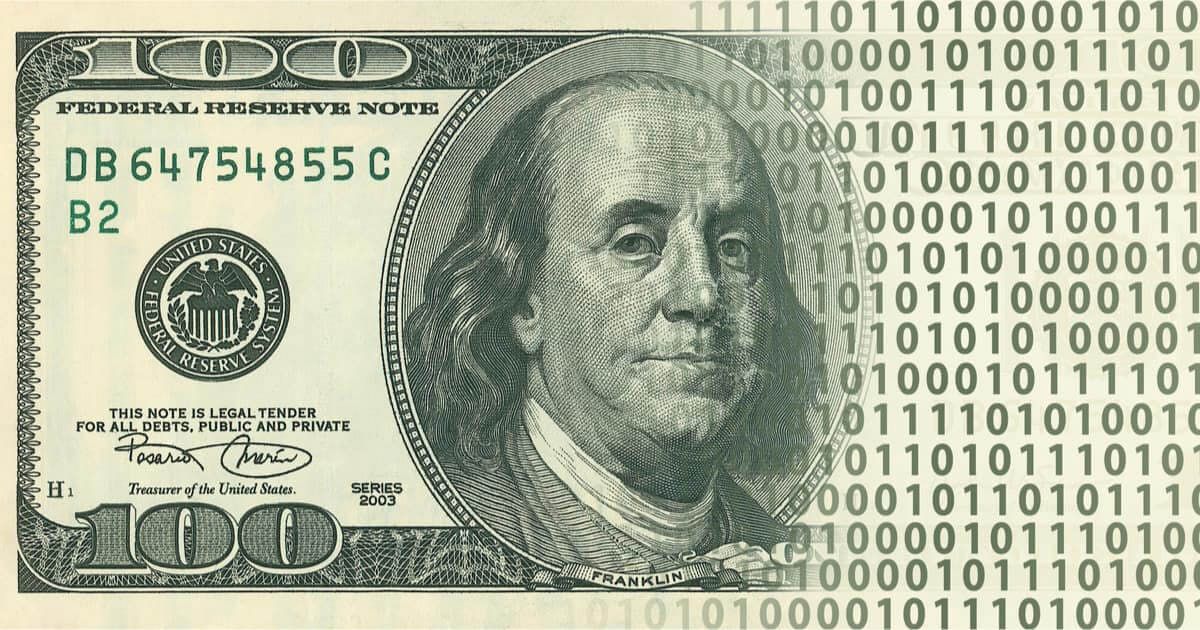The digital dollar is a concept that has been actively discussed in the financial world in recent years, especially in the context of the rapid development of blockchain technology and cryptocurrencies. For users of the cryptocurrency exchange MEXC, where hundreds of digital assets are traded daily, understanding the digital dollar can be an important step towards a deeper immersion in the world of digital finance. In this article, we will explore what the digital dollar is, how it relates to cryptocurrencies, what its prospects are in 2025, and how traders can use this information to make decisions on the platform MEXC.
We will explore the key aspects of the digital dollar, including its economic significance, political constraints, technical features, and current news. This article will be useful for both beginners and experienced traders who want to stay informed about the latest trends in the world of financial technology.

General Information
The digital dollar, or CBDC (Central Bank Digital Currency), represents a digital form of the US national currency that could theoretically be issued by the Federal Reserve System (FRS). It is not a new currency, but a digital version of the existing dollar, aimed at simplifying transactions, increasing transparency, and improving access to financial services. Unlike cryptocurrencies such as Bitcoin or Ethereum, the digital dollar is centralized and controlled by the government.
The idea of a digital dollar began to be actively discussed in the late 2010s against the backdrop of the growing popularity of cryptocurrencies and the development of national digital currencies in other countries, such as the digital yuan in China. The main goal of the digital dollar is to maintain the dominance of the US dollar as the world’s reserve currency in the context of the digitalization of the economy. However, despite numerous discussions, by April 2025, the digital dollar has not been officially implemented, which is related to political and technical difficulties.
On MEXC, where users actively trade cryptocurrencies, understanding the concept of the digital dollar can help traders better navigate global financial trends. For example, the implementation of the digital dollar could affect the popularity of stablecoins, such as USDT, which are often used on the exchange.
Rate and Economy
Since the digital dollar has not yet been released, it is impossible to talk about its exchange rate in the traditional sense. However, if it is implemented, its value will be pegged to the regular US dollar at a ratio of 1:1, as is the case with other CBDCs, such as the digital ruble in Russia. This means that the digital dollar will not be subject to the volatility characteristic of cryptocurrencies like Bitcoin, traded on MEXC.
Economic Significance
The digital dollar could play a key role in the global economy. The US dollar has long been the primary reserve currency used in international trade. However, with the development of digital currencies like the digital yuan and the growing popularity of stablecoins like USDT and USDC, the US risks losing some of its influence. The digital dollar could become a tool to maintain this status, simplifying cross-border payments and reducing reliance on traditional banking systems.
On the other hand, economists note potential risks. For example, the introduction of a digital dollar could weaken commercial banks, as people would be able to store money directly in digital wallets of the Federal Reserve, bypassing intermediaries. This could lead to a decrease in bank deposits and complicate lending.
For traders on MEXC, this means that the emergence of a digital dollar could impact the stablecoin market. If the digital dollar becomes a reality, the demand for USDT and USDC, which currently dominate trading pairs, may decrease.
Politics and Bans
The political situation around the digital dollar remains complex. In 2025, the USA continues to discuss the possibility of its implementation, but significant obstacles remain. At the beginning of the year, President Donald Trump, returning to power, signed an executive order prohibiting federal agencies from developing or promoting CBDC. This decision was reinforced by a statement from Fed Chairman Jerome Powell, who confirmed that, as long as he holds his position, the digital dollar will not be created. The main arguments against include:
- Surveillance risk: The digital dollar could become a tool for monitoring citizens’ financial activities.
- Privacy threat: Many Americans fear that the government will gain access to their transactions.
- Financial freedom: Conservatives believe that CBDC will enhance the government’s power over citizens’ money.
International context
At the same time, other countries are actively developing their digital currencies. For example, the European Central Bank has accelerated work on the digital euro, seeing this as a response to the U.S. policy of promoting stablecoins. The Chinese digital yuan is already being used in real transactions, which increases pressure on the U.S.
For MEXC users, this means that global financial trends can impact the market. For example, the rise of the digital yuan may increase interest in Chinese crypto projects traded on the exchange.
Encoding and Accounting
If the digital dollar is implemented, its technical realization will likely differ from decentralized cryptocurrencies. Unlike Bitcoin, which uses blockchain and Proof-of-Work to account for transactions, the digital dollar will probably operate on a centralized platform controlled by the Federal Reserve. However, some experts suggest that elements of distributed ledger technology (DLT) may be used to enhance transparency and security.
What it might look like
- Digital wallets: Citizens will be able to store digital dollars in wallets accessible through mobile apps or banks.
- Transaction accounting: All operations will be recorded on the Federal Reserve’s platform, ensuring a high level of control.
- Security: Encryption technologies and digital signatures will protect transactions from fraud.
At MEXC, where transaction security is a priority, understanding these technologies can be beneficial. For example, if a digital dollar uses blockchain, it could increase interest in projects related to DLT that are traded on the exchange.
Introduction and Existence
As of April 2025, the digital dollar remains a concept rather than a reality. Despite numerous initiatives, such as the Digital Dollar Project (DDP), which launched pilot projects in 2021, and studies by the Fed, there has been no official implementation. The main reasons are:
- Political resistance: As mentioned above, the Trump administration and part of Congress oppose CBDCs.
- Technical complexities: Creating the infrastructure for a digital dollar requires significant resources.
- Social barriers: About 45 million Americans do not own smartphones, making access to digital wallets difficult.
Experience of Other Countries
For comparison, China has already implemented the digital yuan, which is actively used in retail payments. The Bahamas has been operating the “sand dollar” since 2020 — the world’s first CBDC. These examples show that digital currencies can be successfully integrated but require careful preparation.
Relationship with Cryptocurrencies
The digital dollar is often compared to cryptocurrencies, but there are key differences between them:
- Centralization: The digital dollar is controlled by the Federal Reserve, while Bitcoin and Ethereum are decentralized.
- Volatility: The digital dollar will be pegged to the regular dollar, unlike cryptocurrencies, whose prices fluctuate significantly.
- Regulation: CBDC is fully regulated by the government, while cryptocurrencies often operate in a gray area.
Impact on the Cryptocurrency Market
If the digital dollar is implemented, it could impact the cryptocurrency market traded on MEXC:
- Stablecoins: USDT and USDC may lose popularity as the digital dollar becomes a more reliable alternative.
- Cross-border payments: The digital dollar may simplify international transfers, reducing the demand for cryptocurrencies for these purposes.
- Regulation: The success of CBDCs could lead to tighter regulation of cryptocurrencies.
For traders on MEXC, this means the need to keep an eye on news about the digital dollar, as its implementation may impact asset prices.
How to use
As the digital dollar does not yet exist, its use remains hypothetical. However, if implemented, here’s how it might look:
- Payments: Citizens will be able to use the digital dollar to pay for goods and services through digital wallets.
- Transfers: Cross-border payments will become quicker and cheaper, as there will be no need for banking intermediaries.
- Investments: On MEXC, the digital dollar could become the base currency for trading pairs, replacing USDT.
For Traders on MEXC
While the digital dollar is not yet available, traders can use stablecoins such as USDT to minimize volatility. It’s also worth paying attention to CBDC-related projects that may emerge on MEXC in the future. For instance, tokens associated with digital currency infrastructure could become promising.
Learn more about stablecoins in the MEXC section.
Current News
As of April 2025, the digital dollar remains in the spotlight:
- Trump’s Executive Order: In January 2025, Donald Trump signed an executive order prohibiting the development of CBDC, continuing his campaign promises.
- Powell’s Statement: Jerome Powell confirmed that the Fed will not work on a digital dollar, which received positive feedback from financial freedom advocates.
- International Trends: The European Central Bank has accelerated work on the digital euro, and China continues to expand the use of the digital yuan.
For traders on MEXC, this news means that the stablecoin market will remain stable for the near future, but it is worth keeping an eye on the developments of CBDCs in other countries, as they may affect global financial flows.
Conclusion
The digital dollar is an ambitious idea that could change the financial system of the USA and the world, but as of April 2025, it remains unrealized due to political and technical obstacles. For MEXC users, understanding this concept is important, as it may impact the cryptocurrency market, especially stablecoins and cross-border payments. While the digital dollar is not yet available, traders can focus on current assets and stay updated on news about CBDCs.
Ready to trade with global trends in mind? Register on MEXC and get started right now!
Join MEXC and Get up to $10,000 Bonus!
Sign Up


